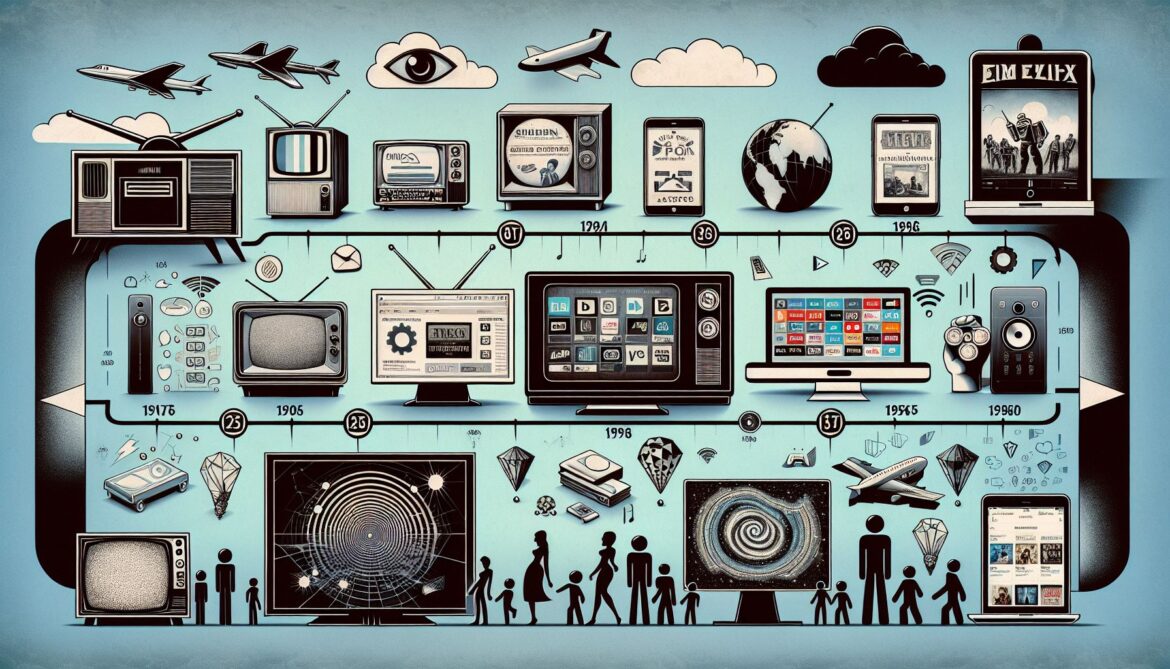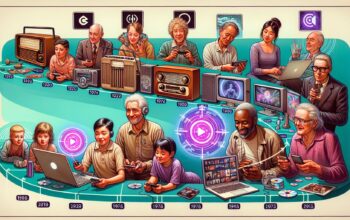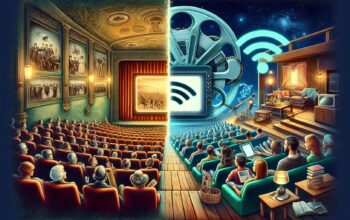
Streaming services have debuted center stage in our life’s theater, transforming when, where, and how we consume entertainment. Engulfing everything from music and movies to podcasts and plays, they’ve fundamentally reshaped our viewing habits and catalyzed a seismic shift in the entertainment industry.
Changing Channels
Remember the days when Friday night meant scooting to the nearest Blockbuster to rent that new hit movie? Or waiting a week for the next episode of your favorite television show? Streaming services have demolished those erstwhile norms, ushering in an era of instant and endless gratification.
Leading the charge, Netflix, the revolutionary pioneer, capitalized on viewers’ growing disillusionment with traditional cable’s limitations, offering an ad-free, binge-able alternative with high-quality original content. Following Netflix’s success, a plethora of platforms, from Hulu and Amazon Prime Video to Disney+, HBO Max, and Apple TV+, sprung up, turning the streaming sphere into a heated battleground.
The Streaming Effect
Pundits were quick to declare the death of cinema with this streaming advent. And it’s indeed true that traditional media formats have had to grapple with diminishing box office sales and dwindling TV viewership. But the story isn’t quite that straightforward. The streaming wave has instead contributed to a ‘content boom’, with studios pumping out record volumes of high-quality movies and TV shows to service both their traditional channels and new digital outlets.
Still, streaming’s biggest impact has surely been on our viewing habits. With the rise of smartphones and smart TVs, we can now stream our preferred content anywhere, anytime, leading to an increase in overall consumption. In fact, according to a 2020 Nielsen report, the average American spends over 6 hours per day consuming digital media, a significant increase compared to the pre-streaming era.
Bridging Geographical Gaps
The geographical constraints tied to television broadcasting used to limit viewers to local programming or syndicated international shows. Streaming services annihilated these barriers overnight, introducing audiences to a wealth of foreign content. They’ve championed the subtitled and dubbed versions of anime in the West, and brought international visibility to non-English-speaking movies and shows.
The Future of Streaming
As we look forward, the streaming sphere continues to evolve. Live streaming, a growing trend on platforms such as Twitch and YouTube, augurs a new era of real-time entertainment. Meanwhile, Virtual Reality allows users to immerse themselves in their favorite shows or movies as if they were a part of it.
Twenty years ago, who could have predicted a rental DVD company would become a media Goliath, altering the landscape of global entertainment? Likewise, the future trajectory of streaming services is uncertain. One thing, however, is clear: they’ll continue adjusting, innovating, and reinventing, reshaping the entertainment world according to the viewers’ evolving needs and tastes.
In conclusion, streaming services, once a novelty, are now a scintillating reality. They’ve revolutionized our entertainment consumption, democratized content access, and unfastened the creative floodgates in film and television production. As we navigate this continuously evolving landscape, one thing is unmistakable: streaming isn’t just the future of entertainment. It’s the present.



